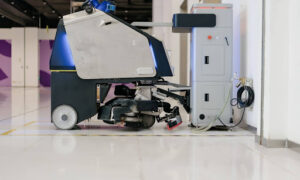Robot-assisted medical operations have been a growing area of the medical field for some time now. The technology has helped many medical teams improve their outcomes by leveraging the precision and accuracy of computers and robotic devices. However, not all robotic systems are created equal and the field often depends on innovations from private companies for advancement. Of late, one company — Augmedics — has become known for its efforts under President & CCO Tim Murawski to bring forth a new way of using these technologies to help improve patient outcomes. Read on for a look at how the President & CCO is making an outsized impact on his broader industry.
How a Robot-Assisted Operation Works
Before we dive into the specifics of how Tim Murawski is helping to move his field forward, let’s first look at where it’s been to date. Robot-assisted operation is largely known for the manner in which it allows doctors to perform complex surgical activities in an augmented fashion. Often, these technologies allow medical teams a greater degree of flexibility, precision, and control than they might otherwise be able to achieve through older methods. The technology can also allow doctors to perform operations in a less invasive fashion, which can help to improve patient outcomes and reduce recovery time.
In the past, robot-assisted operations have often been conducted with the use of a console nearby the operating table. A camera arm operated next to medical instruments would feed data back to the console and provide a detailed view of the operation site. This would allow doctors to visualize the interior of the body and what is going on below the surface of a patient’s skin.
However, this setup would also require a doctor to direct their attention to the console beside the operating table, rather than at the patient themself. For many doctors, this configuration has been less than ideal.
Tim Murawski Relies on Long Career of Experience
It’s difficult to separate the field of robot-assisted operations from the work of President & CCO Tim Murawski since he’s played an outsized role in increasing the adoption rate of the technology.
The executive first helped to introduce the technology in 2000 through business development, strategy, and sales operations. This was in his capacity working in sales at the time, which allowed him to introduce the exciting technology to medical teams around the country and help showcase the benefits that could come along with the adoption of such a system.
In the years since those first efforts, he has remained in the space, growing his career as the field itself matured. He has worked at a variety of companies focused on bringing the benefits of robotic operations to medical teams and patients and has helped a wide range of doctors improve their operation success rates. Since taking on his role as President & CCO of Augmedics, he has turned his attention to a new chapter in his legacy and has focused on improving the field in a variety of ways. This work has been driven by the introduction of the company’s xvision system, which seeks to fundamentally change how robot-assisted operations are conducted.
Limitations of Older Robotic Medical Operation Systems
In order to fully grasp the improvements that Tim Murawski is bringing to his field through xvision, it helps to first understand some of the limitations of older robotic medical operation systems. One of those limitations has been the manner in which visualization consoles/monitors are placed adjacent to operating tables. As the camera arm collects data from inside the patient, the console/monitor would display a visualization that helps direct surgeon movements.
However, the doctor would then have to frequently switch their focus from the patient to the console/monitor in order to fully monitor the procedure as it unfurls. This requirement for switching focus has been a limitation of older systems as it requires frequent attention shifts that can make it difficult for doctors to remain focused. This can add complicating factors to operations and serve to draw out procedures that might otherwise be completed much faster. In the past, this has meant that an operating doctor could gain the added precision and benefit of a robot-assisted medical operation system at the expense of having to manage that system in a more complex manner than with past methods.
Tim Murawski Helps Commercialize xvision Spine System
This frequent context switching has been one of the main problems that Tim Murawski and his team have sought to address through their creation of the xvision Spine System. This robot-assisted medical operation system allows physicians to visualize a patients’ 3D spinal anatomy during surgery as if they had “x-ray vision.” The system helps them to leverage the accuracy improvements of robotic technologies while still being able to directly look at the patient and avoid the frequent focus shifts necessitated by the use of adjacent consoles.
The system utilizes a transparent near-eye-display headset along with other elements of a traditional robotic-assisted navigation system. The system can accurately determine the position of medical tools in real-time and superimpose them on the patient’s CT data. That data is then projected onto the operating physician’s retinae from the headset which allows for continuous viewing of the patient while having access to the data stream. This system does away with the need to context switch by turning to another screen and may help doctors achieve faster and safer operations.
While robot-assisted medical operations have garnered widespread adoption in recent years, there are still some outstanding issues with existing systems that have stood as an impediment to medical teams. One such impediment has been the frequent context switching that is necessitated by traditional console-based display systems. In an effort to address this, President & CCO Tim Murawski and his team at Augmedics have created the xvision Spine System, which allows for the simultaneous viewing of navigation data and patient visualization during operations. This new technology stands out as an exciting advancement in the field and is being viewed by many as a major step forward towards the goals of achieving increased precision, faster operation times, and overall improved patient outcomes.



































